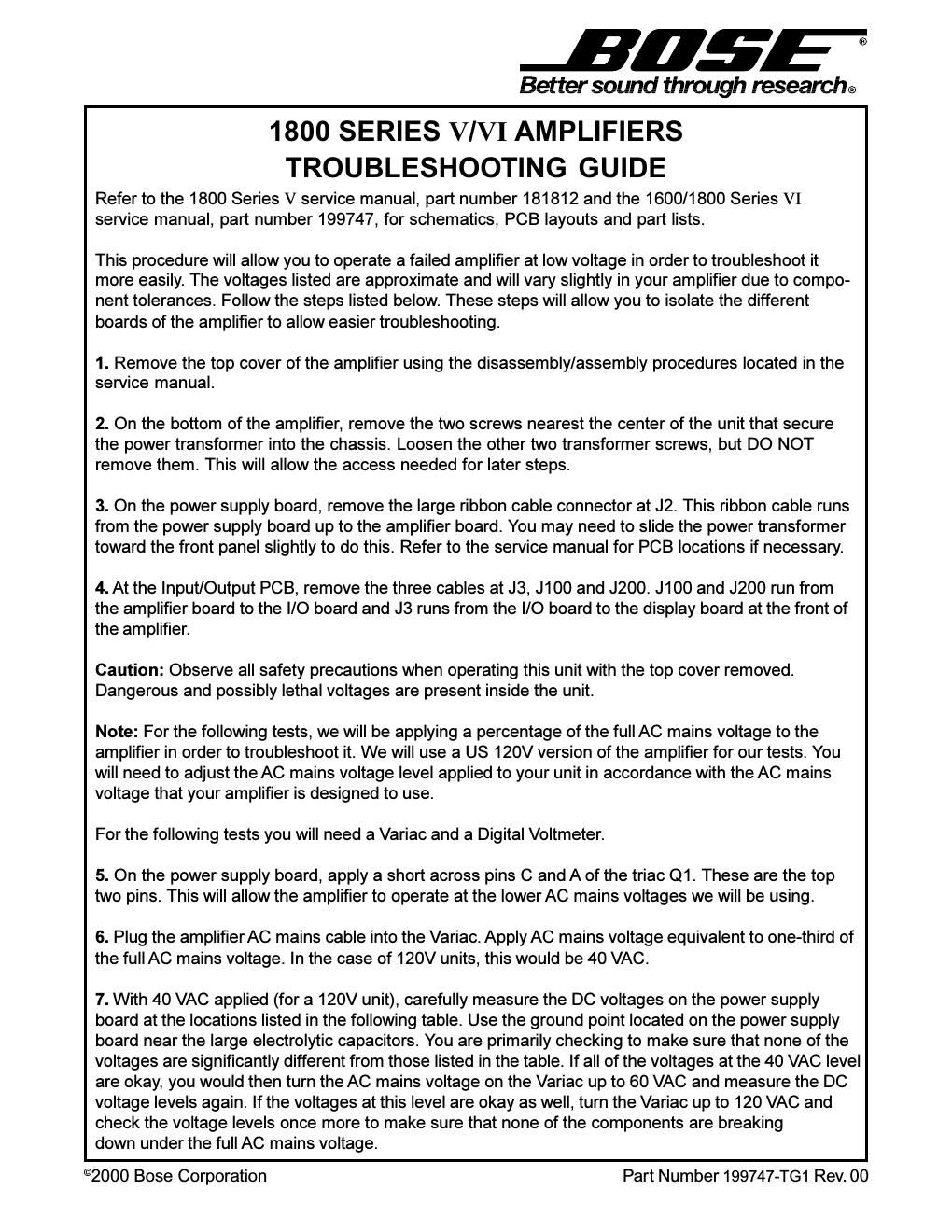Bose 1600 vi 1800 v vi amplifiers troubleshooting guide
This is the 2 pages manual for bose 1600 vi 1800 v vi amplifiers troubleshooting guide.
Read or download the pdf for free. If you want to contribute, please upload pdfs to audioservicemanuals.wetransfer.com.
Page: 1 / 2
